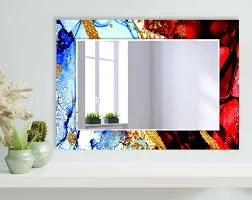

Understanding Fully Tempered Glass A Comprehensive Overview
Fully tempered glass, also known as toughened glass, is a type of safety glass that has been treated through controlled thermal processes. This treatment significantly enhances the glass's strength and thermal resistance, making it a preferred choice for various applications where safety and durability are paramount.
The Manufacturing Process
The process of creating fully tempered glass involves heating the glass to extremely high temperatures, typically around 620 to 650 degrees Celsius. Once the glass reaches this temperature, it is rapidly cooled using a process known as quenching. This rapid cooling creates a balance between internal and external stresses within the glass, resulting in a material that is much stronger than standard annealed glass.
This unique manufacturing technique not only increases the glass's strength but also improves its thermal resistance. Fully tempered glass can withstand temperature fluctuations of approximately 200 degrees Celsius, making it suitable for environments with high heat exposure.
Properties of Fully Tempered Glass
One of the standout features of fully tempered glass is its strength. It is reported to be up to five times stronger than standard glass of the same thickness. This added strength means that in the event of breaking, fully tempered glass shatters into small, blunt pieces rather than sharp shards, reducing the risk of injury.
In addition to its strength, fully tempered glass is also highly resistant to impact and thermal stress. This makes it an excellent choice for applications in buildings, vehicles, and various industries where safety is a concern.
Applications of Fully Tempered Glass

Fully tempered glass is used in a wide variety of applications. In residential settings, it is commonly found in shower doors, glass facades, and window systems. Its safety features make it ideal for areas where there is a high risk of impact or where there is a potential for glass breakage due to environmental factors.
In commercial spaces, fully tempered glass is often used in storefronts and office partitions. Its aesthetic appeal combined with its safety features can enhance the design of a space while ensuring the safety of occupants and passersby.
Another significant application of fully tempered glass is in the automotive industry. It is used for vehicle windows and sunroofs, providing not only strength and safety but also contributing to the overall aesthetics of modern vehicle design.
Advantages of Fully Tempered Glass
The advantages of fully tempered glass extend beyond safety and aesthetics. It also offers excellent optical clarity, making it suitable for high-visibility applications. Furthermore, the material is available in various sizes and thicknesses, allowing for flexibility in design and construction.
Fully tempered glass is also resistant to water and various chemicals, making it easy to clean and maintain. This feature is particularly beneficial in both residential and commercial settings, where cleanliness is a priority.
In addition to its inherent physical properties, fully tempered glass can be customized with various coatings and treatments. For example, low-emissivity (low-E) coatings can improve thermal performance, helping to reduce energy costs in buildings by minimizing heat transfer.
Conclusion
In conclusion, fully tempered glass is a remarkable material that combines strength, safety, and versatility. Its unique manufacturing process provides a product that is not only aesthetically pleasing but also exceptionally durable and resistant to environmental factors. As innovation in glass technology continues to evolve, fully tempered glass remains a favored choice across numerous industries, contributing to safer, more beautiful spaces. Whether in a home, office, or vehicle, the benefits of fully tempered glass are clear, making it an essential component in modern design and architecture.